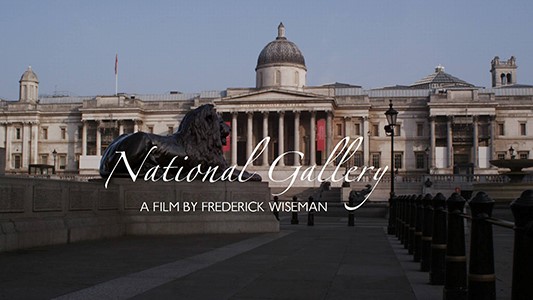- Events & Programs Home
- Calendar
- Accessibility
- Adults
-
Families & Teens
- Families & Teens Home
- 10x10 Teen Art Expo
- Art on the Rise
- Art Together: Art Making for Families with Children Ages 3–5
- Babies Sing with May Festival Minis
- Boy Scouts / Girl Scouts
- CAM Kids Day
- Family Storytime and Gallery Walk
- Family Studio: Art Making for Families with Children Ages 6–12
- Games in the Galleries
- Members-Only Baby Tours
- Public Baby Tours
- REC Reads
- Rosenthal Education Center (REC)
- Saturday Morning Art Class
- See Play Learn Kits
- Summer Camp
- Teen Fest: Zine and Comic Exchange
- RECreate
- Teachers
- Community Outreach
- Fundraisers
- Plan Your Own Event

- Events & Programs Home
- Calendar
- Accessibility
- Adults
-
Families & Teens
- Families & Teens Home
- 10x10 Teen Art Expo
- Art on the Rise
- Art Together: Art Making for Families with Children Ages 3–5
- Babies Sing with May Festival Minis
- Boy Scouts / Girl Scouts
- CAM Kids Day
- Family Storytime and Gallery Walk
- Family Studio: Art Making for Families with Children Ages 6–12
- Games in the Galleries
- Members-Only Baby Tours
- Public Baby Tours
- REC Reads
- Rosenthal Education Center (REC)
- Saturday Morning Art Class
- See Play Learn Kits
- Summer Camp
- Teen Fest: Zine and Comic Exchange
- RECreate
- Teachers
- Community Outreach
- Fundraisers
- Plan Your Own Event
Blog: CAM Uncovered
Blog: CAM Uncovered
- Home
- Plan Your Visit
- Art
-
Events & Programs
- Events & Programs Home
- Calendar
- Accessibility
- Adults
-
Families & Teens
- Families & Teens Home
- 10x10 Teen Art Expo
- Art on the Rise
- Art Together: Art Making for Families with Children Ages 3–5
- Babies Sing with May Festival Minis
- Boy Scouts / Girl Scouts
- CAM Kids Day
- Family Storytime and Gallery Walk
- Family Studio: Art Making for Families with Children Ages 6–12
- Games in the Galleries
- Members-Only Baby Tours
- Public Baby Tours
- REC Reads
- Rosenthal Education Center (REC)
- Saturday Morning Art Class
- See Play Learn Kits
- Summer Camp
- Teen Fest: Zine and Comic Exchange
- RECreate
- Teachers
- Community Outreach
- Fundraisers
- Plan Your Own Event
- Give & Join
- About
- Tickets
- Calendar
- Exhibitions
- Collections
- Blog
- Shop
Exploring the National Gallery
by Brian Sholis
1/7/2015
curatorial , Brian Sholis , photography , travel , events & programs , films

When I travel I always visit museums, and the National Gallery in London is a perennial favorite. Although I’m a curator of photography and most knowledgeable about modern and contemporary art, my favorite room in the National Gallery contains what I call “old and gold” material—artworks from the transitional moment between late Medieval painting, with its use of gold leaf for backgrounds and flattened spatial designs, and early Renaissance painting, with increased adherence to the rules of perspective. If you enter the Sainsbury Wing, it just so happens that Room 52, which houses Italian paintings made between 1350 and 1400, is the first one you encounter after ascending the grand staircase. Turn left at the top of the stairs and enjoy.
Many such public galleries—as well as offices, storage spaces, and other normally off-limits areas—appear in documentary filmmaker Frederick Wiseman’s new feature,National Gallery (2014). We’ll be screening this three-hour film in Fath Auditorium on Sunday, January 25, beginning at 1:00 p.m. Manohla Dargis, writing in the New York Times, says the film “is at once specific and general, fascinating in its pinpoint detail and transporting in its cosmic reach. It’s about art and process, money and mystery, and all the many, many people gazing and gawping and, at times, lining up to see a blockbuster show. […] With cool intelligence and a steady camera, Mr. Wiseman guides you through the museum and past its masters, pausing to look but also to listen to what becomes a museum-wide conversation on form, content, and context.”
For another insight into the National Gallery, as well as the minds and routines of art museum security guards, I recommend Chloe Aridjis’s 2013 novel Asunder. The book follows the inner life of Marie, a young guard who works at the National Gallery and who becomes fascinated by the early-twentieth-century suffragette movement. The book is about, in part, the power dynamics of gazing—whether at a painting or at a person. In an interview published online at Granta, Aridjis said of her research visits to the National Gallery, “I really enjoyed just sitting there on a bench and watching, because I do feel that museums have strange effects on people psychologically—one does enter into a different mental atmosphere, regardless of how interested in art you happen to be.”
Come be transported by Wiseman’s vision of the National Gallery,and learn more about how institutions like the Cincinnati Art Museum work, at this Cincinnati premiere screening.
– Brian Sholis, Associate Curator of Photography
Cincinnati, OH 45202
Toll Free: 1 (877) 472-4226
Museum Hours
Museum Shop
Terrace Café
Library
Cincinnati Art Museum is supported by the tens of thousands of people who give generously to the annual ArtsWave Campaign, the region's primary source for arts funding.

Free general admission to the Cincinnati Art Museum is made possible by a gift from the Rosenthal Family Foundation. Exhibition pricing may vary. Parking at the Cincinnati Art Museum is free.
Generous support for our extended Thursday hours is provided by Art Bridges Foundation’s Access for All program.

General operating support provided by:



